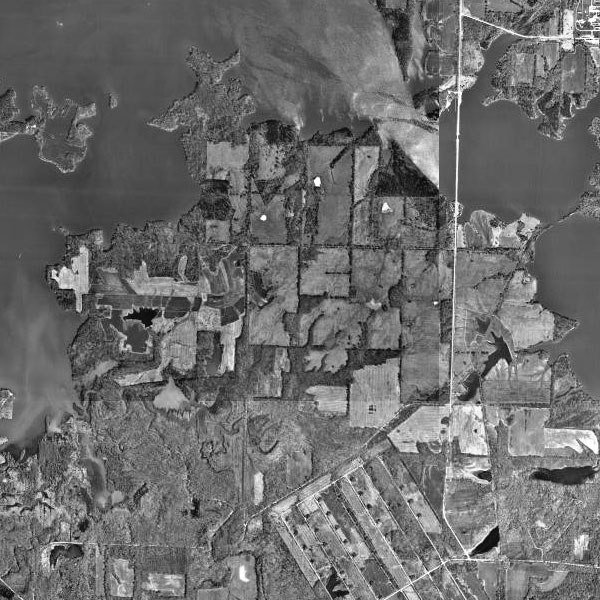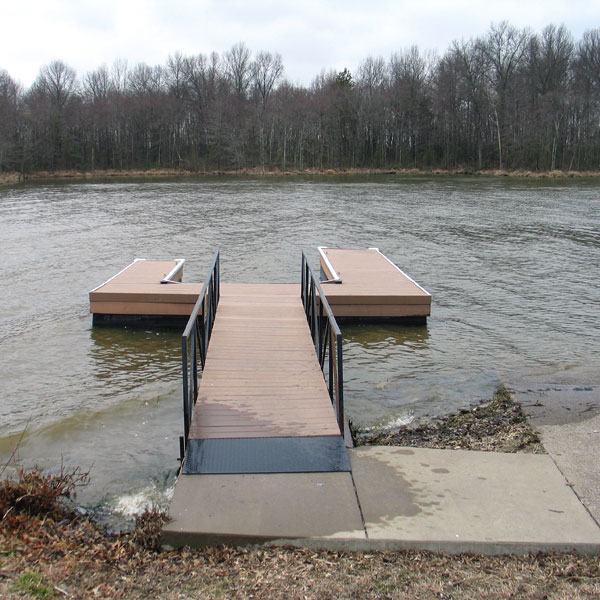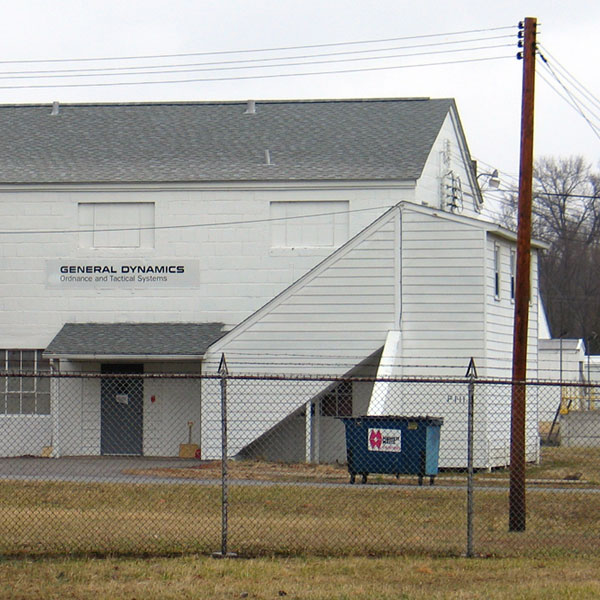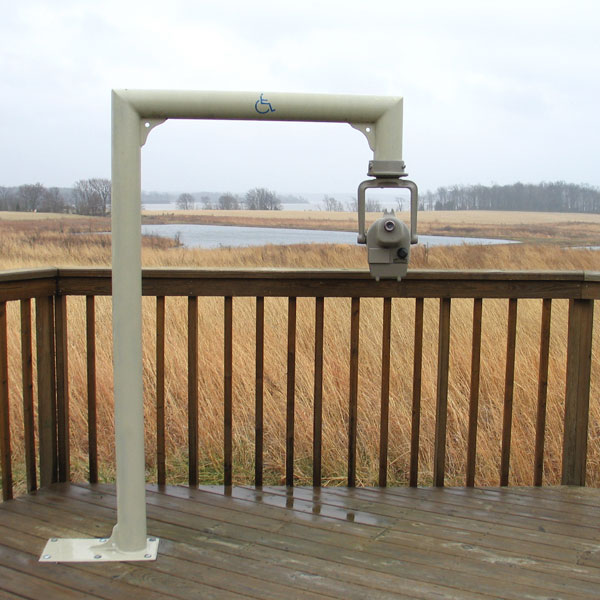
U.S. Census Bureau / Carterville, Illinois
U.S. Fish & Wildlife Service / Crab Orchard National Wildlife Refuge
Illinois Department of Public Health / Public Health Assessment
TerraServer / Aerial Photo
Crab Orchard National Wildlife Refuge (GORP)
Established in 1947, Crab Orchard is unique among national refuges because it hosts industrial operations within its boundaries. The refuge's land was transferred to the public by the War Department, which had run the Illinois Ordnance Plant there during World War II. The congressional act mandating the transfer stipulated that industry could continue to use the space, and maintaining that industry is one of the refuge's aims (albeit a diminishing aim, as industry slowly reduces its presence).
The other goals of Crab Orchard are more typical of national lands: recreational use, agricultural development, and wildlife conservation. The refuge's 43,600 acres, half of which are a wildlife sanctuary and closed to the public, host a 4,000-acre designated wilderness, more than 5,000 acres of cropland, and three manmade lakes teeming with fish. The generally flat terrain is enlivened by forested hills in the south and chock-full of wildlife.
Over one million people visit Crab Orchard each year, mainly to enjoy the lakes but also for wildlife observation, nature walks, and environmental education. Five youth camps on Little Grassy Lake provide a place for children (about 25,000 annually) to learn about nature and the refuge.
-
Crab Orchard National Wildlife Refuge (U.S. Fish & Wildlife Service)
Little is known of the first inhabitants of Southern Illinois, although indications of their presence appear in artifacts of stone, bone, and clay. Some of the Kaskaskia and Shawnee may have lived in the Crab Orchard area, but it is more likely that they used it as part of their hunting grounds.
The earliest frontiersmen came into the area in the late 1700s. By the 1940s, homesteaders had established farms throughout the area that now makes up the refuge. Utilizing the abundance of game, homesteaders dined on buffalo, deer, quail, and passenger pigeons.
By the 1930s, land that once supported wildlife was depleted through extensive agriculture and logging. In 1936, the Resettlement Administration acquired 32,000 acres of this depleted land along the Crab Orchard Creek which became known as the Crab Orchard Creek Project. Original plans called for the construction of three lakes for recreational use and as an industrial water supply.
Crab Orchard Lake was completed by the Works Progress Administration (WPA) in 1939, and approximately 3,000 acres were planted with almost 3.5 million trees. The United States' involvement in World War II changed the project's ownership to the War Department and delayed the construction of the other two lakes. The Illinois Ordnance Plant, one of the largest ammunition producers during the war, was established on Crab Orchard Lake. The plant closed soon after the war.
The entire project was transferred to the Department of the Interior's Fish and Wildlife Service for the establishment of Crab Orchard National Wildlife Refuge on August 5, 1947. Finally, in 1951, the WPA and the Soil Conservation Service completed Little Grassy Lake, and in 1959, Devils Kitchen Lake was completed.
-
Located west of Marion, Illinois, on the northern edge of the Ozark foothills, Crab Orchard National Wildlife Refuge is one of the largest refuges in the Great Lakes/Big Rivers Region. Established in 1947, the 43,890-acre Refuge includes three man-made lakes totaling 8,700 surface acres. The Refuge landscape also includes hardwood and pine forests, croplands, grasslands, wetlands, rolling hills, and rugged terrain with slopes of 24 percent. The 4,050-acre Crab Orchard Wilderness, the first wilderness area designated in the State of Illinois, is within the Refuge.
Crab Orchard Refuge is unique in the National Wildlife Refuge System in having an industrial program that generates $40 million annually to the local economy. Crab Orchard Refuge is also the only national wildlife refuge to have resident youth camps, such as those operated by Girl Scouts, Boy Scouts, and several churches.
The Refuge hosts an estimated 1.2 million visitors annually, and its recreation programs contribute $25 million to the local tourism economy. Public use opportunities at the Refuge include an auto tour route, hiking trails, hunting, fishing, wildlife observation and photography, environmental education and interpretation, boating, swimming, camping, and picnicking.
Crab Orchard National Wildlife Refuge has four primary purposes:
1. Wildlife conservation: The Refuge exists to protect, enhance, and manage natural resources and the Refuge landscape through an ecosystem approach that sustains optimum populations of migratory waterfowl, native fish and wildlife species, and threatened and endangered wildlife.
2. Agriculture: The Refuge seeks to provide opportunities for and encourage agricultural uses that help attain wildlife conservation goals, benefit the local economy, and are compatible with other Refuge purposes.
3. Industry: The Refuge manages an industrial complex fully utilized by compatible tenants that conform to prescribed safety, health, environmental, and maintenance standards.
4. Recreation: The Refuge provides safe and equitable public use programs and facilities so that visitors have a wholesome, enjoyable recreational experience and gain an appreciation for fish and wildlife resources, natural and cultural history, outdoor ethics, and environmental awareness.

General Dynamics / Ordnance and Tactical Systems
-
"General Dynamics' Marion plant gets $12.4M Army order" (5/18/04)
General Dynamics Ordnance and Tactical Systems unit in Marion, Ill., has received a $12.4 million contract modification from the U.S. Army for ammunition, the Department of Defense said.
The company will produce 140,000 M919 cartridges to be used in the M242 chain gun on the Bradley Fighting Vehicle.
A small percentage of the work will be performed in St. Louis and in Belleville, Ill., and will be completed by Dec. 31, 2006.
The Marion facility, about 118 miles southeast of St. Louis, has produced over 25 million rounds of the M793, a family of 25mm Bushmaster munitions used on the U.S. Army's M2/M3 Bradley Fighting Vehicle, with success in Operation Desert Storm and Operation Iraqi Freedom.
General Dynamics, headquartered in Falls Church, Va., employs approximately 67,600 people worldwide and had 2003 revenue of $16.6 billion. Its Ordnance and Tactical Systems unit develops and manufactures ammunition systems for the armed forces of the United States and its allies.
-
25mm x 137 Armor Piercing Fin Stabilized Discarding Sabot-Tracer M919 Ammunition
General Dynamics Ordnance and Tactical Systems is the sole producer of combat proven 25mm APFSDS-T M919 cartridges. The high velocity M919 assures first shot hit and kill for armored threats. The M919 fin stabilized long rod penetrator has demonstrated significant penetration effectiveness when compared with current spin stabilized APDS-T cartridges. The M919 propulsion system provides high muzzle velocity with low operating pressure compatible with M242 gun system life cycle requirements. The M919 is fully interoperable with M242 and KBA-B02 automatic gun systems.
-
General Dynamics, Marion, Ill., was awarded on June 28, 2005, an $11,838,641 firm-fixed-price contract for M788 30mm Target Practices and M848 30mm Dummies. Work will be performed in Marion, Ill., and is expected to be completed by June 30, 2006. Contract funds will not expire at the end of the current fiscal year. There were two bids solicited on March 8, 2005, and two bids were received. The U.S. Army Field Support Command, Rock Island, Ill., is the contracting activity (W52P1J-05-C-0046).
General Dynamics, Marion, Ill., was awarded on June 28, 2005, a $9,240,296 firm-fixed-price contract for Target Practices for the M793 and M910 25mm Cartridges. Work will be performed in Marion, Ill., and is expected to be completed by July 31, 2006. Contract funds will not expire at the end of the current fiscal year. There were two bids solicited on April 8, 2005, and two bids were received. The U.S. Army Field Support Command, Rock Island, Ill., is the contracting activity (W52P1J-05-C-0054).
-
"GENERAL DYNAMICS IN MARION RECEIVES CONTRACT"
Congressman Jerry F. Costello
12th District, Illinois
For Release: Wednesday, December 10, 2003
Washington -Congressman Jerry F. Costello (D-IL) announced that the Department of Defense awarded General Dynamics-Ordnance and Tactical Systems, in Marion, Ill., a $9,637,960 contract for 20mm target practice bulk pack cartridges.
"This work supports our troops and local workers," Costello said. "It is important that our troops have the resources they need to be well trained, and I will continue to support this effort."

"Nature Untouched: Crab Orchard refuge takes visitors on a tour through undisturbed territory"
"Hazards in the Refuge: The Clean-up Begins"
"Southern Illinois Activists Combat PCB Incinerator at Wildlife Refuge"
"Depleted Uranium in the Crab Orchard Wildlife Refuge"
"Students protest war while spreading awareness about depleted uranium"
-
May 19, 1999
The U.S. Department of the Interior has owned the Crab Orchard National Wildlife Refuge (the Refuge) since 1947. The U.S. Fish and Wildlife Service currently administers the Refuge. In the 1920s and 1930s, before the Refuge was established, the area was used as farm land. During World War II, the Department of Defense (DOD) administered the area and constructed the former Illinois Ordnance Plant for munitions production. The plant was constructed on the eastern portion of the Refuge in 1941 and operated until 1945. Following the war, DOD leased the land to private industrial tenants. Some industry continues to operate on the eastern portion of the Refuge. The Refuge currently serves four interests: wildlife, recreation, agriculture, and industry.
The industrial area has been used for manufacturing munitions, transformers, automobile parts, fiberglass boats, metal parts, electrical components, electroplating, cardboard boxes, and ink. Because of past disposal practices in the industrialized, eastern portion of the Refuge, soil, groundwater, surface water, and sediment have been contaminated with various compounds including polychlorinated biphenyls (PCBs), lead, cadmium, chromium, cyanide, arsenic, and explosives. As a result of investigations that identified the contamination, the U.S. Environmental Protection Agency placed the Refuge on the National Priorities List in 1987.
High levels of PCBs were found in some of the large bottom-feeding fish (e.g., channel catfish, carp) in Crab Orchard Lake. The Illinois Department of Public Health (IDPH) issued a sport fish health advisory in 1988. More recent fish sampling efforts suggest the PCB levels in Crab Orchard Lake fish are decreasing.
This site has drawn much attention and concern from the surrounding communities. Primarily, the community voiced concern about the potential release of contaminants into the ambient air from the on-site incineration of the PCB-contaminated soil and sediment. Incineration is complete, and no contaminants that were monitored during the incineration activities were released at levels associated with adverse health effects.
Current conditions at the Crab Orchard Refuge present no apparent public health hazard to the general population. Periodic fish sampling efforts to monitor PCB concentrations in the fish population should be continued at Crab Orchard Lake. Contaminated areas should be posted and remain closed to the public. If data become available suggesting that people are exposed to contaminants at the site at levels of health concern, IDPH will reevaluate the need for any follow-up at the site.
-
U.S. Environmental Protection Agency / Region 5 Superfund Division
Groundwater contaminants include chromium, lead, arsenic, cadmium, PCBs, trichloroethene (TCE), and other chlorinated volatile organic compounds (CVOCs). Sediments and soils are contaminated with PCBs and various heavy metals. Fish have been contaminated with PCBs; therefore, eating contaminated fish may pose a public health threat. Accidental ingestion of contaminated soil or sediments may also pose a health threat. Fish advisories have been in effect at the site since 1984. The site is a National Wildlife Refuge and home for mating pairs of bald eagles. Significant efforts are being made to determine potential threats to ecological receptors.
-
Crab Orchard Creek Watershed / Illinois Natural Resources Conservation Service (NRCS)
A Flood Control Project in the Upper Crab Orchard Creek Watershed
The Upper Crab Orchard Creek Watershed is located in southern Illinois, about 125 miles southeast of St. Louis, Missouri and 60 miles northwest of Paducah, Kentucky. The 82.2 square-mile watershed includes the rural city of Marion, Illinois in Williamson County. The watershed is home to over 20,000 people, 68 percent of whom live in Marion. Marion serves as a trade center for the surrounding agricultural community. About one-half of the watershed is in cropland. It is also a high quality wildlife area used extensively by geese during migration, and by the endangered Indiana bat and bald eagle. Crab Orchard Creek is the main channel in the drainage basin flowing southwesterly to Crab Orchard Lake, part of the Crab Orchard National Wildlife Refuge.
-
ICBUW / International Coalition to Ban Uranium Weapons
Bradley fighting vehicles are mainly in service with the US Army. They are smaller than tanks, about 2 metres shorter than an Abrams tank. During the 2003 Iraq War, US Bradley vehicles (M2 and M3) routinely fired DU shells in residential areas.
The Bradley M2 transports infantry during battle, provides fire cover to dismounted troops and has to defeat armoured vehicles and tanks. The Bradley M3 performs scout missions.
The main armament on the Bradley is a 25mm chain gun with a single barrel. With a switch, the gunner may select his munition of choice, for example high explosive or armour piercing rounds. The standard rate of fire is 200 rounds per minute.
A wide range of ammunition has been developed for the gun. The M919 armour piercing round has a depleted uranium penetrator. M791 armour piercing rounds have a tungsten penetrator.
The uranium munitions for the Bradley, M919 rounds, are made by General Dynamics Ordnance & Tactical Systems (GDOTS).
